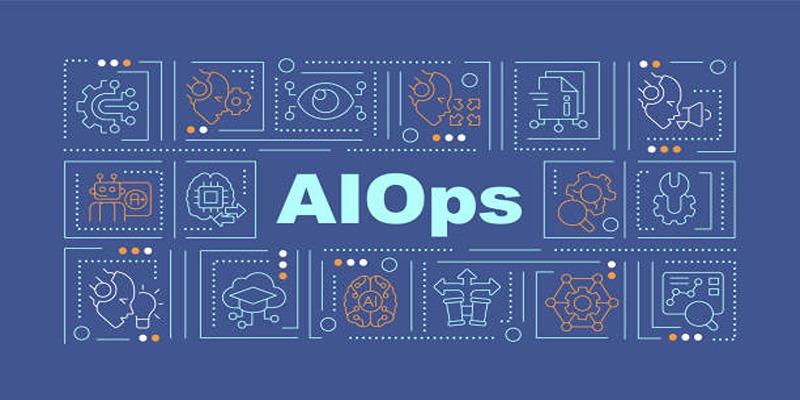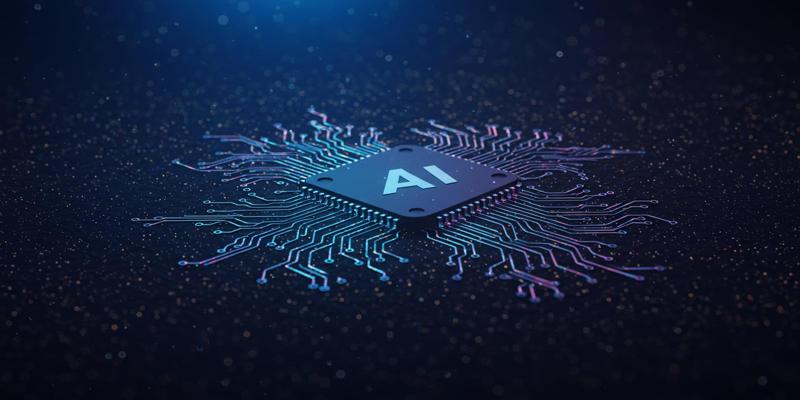Traditional IT operations struggle with the complexity of modern systems like cloud infrastructure and microservices, overwhelmed by data and incidents. Enter AIOps—artificial intelligence for IT operations. By leveraging machine learning, big data, and automation, AIOps revolutionizes IT management, enabling smarter monitoring, troubleshooting, and optimization. Businesses are adopting it rapidly to enhance service reliability, reduce costs, and simplify operations.

Modern IT environments generate massive amounts of data from countless sources—servers, applications, networks, databases, and cloud services all produce continuous streams of metrics, logs, and events.
Traditional monitoring tools create more noise than insight, often triggering thousands of alerts daily that overwhelm operations teams. Without intelligent filtering and correlation, critical issues get lost in the chaos while teams waste time investigating false positives and low-priority alerts.
Digital business demands speed and scale that humans could not keep up with. Organizations require the systems to analyze patterns based on their millions of data points on a real-time basis as well as anticipate possible failures and automatically repair typical problems without involvement of human beings.
One of the most compelling reasons organizations adopt AIOps is its ability to shift from reactive firefighting to proactive problem prevention. Traditional IT operations typically respond to issues after they've already impacted users or business operations. This reactive approach leads to costly downtime, frustrated customers, and stressed IT teams constantly playing catch-up.
AIOps platforms use machine learning algorithms to analyze historical data patterns and identify early warning signs of potential problems. By recognizing subtle anomalies in system behavior—such as gradual memory leaks, increasing response times, or unusual traffic patterns—these systems can alert teams to emerging issues before they escalate into outages.
Alert fatigue represents one of the biggest challenges facing modern IT operations teams. Traditional monitoring systems generate thousands of alerts daily, most of which are either false positives, duplicates, or low-priority notifications that don't require immediate attention.
AIOps addresses this problem through intelligent alert correlation and prioritization. Machine learning algorithms analyze the relationships between different alerts, grouping related notifications and identifying the root cause of complex issues. Instead of receiving dozens of separate alerts when a network component fails, teams receive a single, prioritized notification that includes context about the impact and suggested remediation steps.
This intelligent filtering dramatically reduces the cognitive load on operations teams. Engineers can focus their attention on genuinely critical issues rather than wasting time investigating routine anomalies or false alarms. Many organizations report reducing their alert volumes by 80% or more while simultaneously improving their ability to detect and respond to real problems.
When incidents do occur, AIOps significantly accelerates the root cause analysis process. Traditional troubleshooting often involves manually correlating data from multiple monitoring tools, searching through log files, and relying on tribal knowledge to identify potential causes.
AI-powered systems can instantly analyze vast amounts of operational data to identify patterns and correlations that would take human operators hours or days to discover. These platforms maintain comprehensive baselines of normal system behavior and can quickly pinpoint deviations that contributed to an incident.
Machine learning algorithms excel at identifying subtle relationships between seemingly unrelated events. For example, an AIOps system might discover that application performance issues consistently occur 30 minutes after specific database maintenance tasks, or that network latency spikes correlate with particular batch job schedules.
Beyond detection and analysis, AIOps enables automated remediation of common issues through self-healing system capabilities. Many routine operational problems—such as service restarts, resource scaling, or configuration adjustments—can be resolved automatically without human intervention.
Automation reduces the mean time to recovery (MTTR) for incidents from hours to minutes or even seconds. When an AIOps system detects a failed service, it can immediately attempt standard remediation procedures like restarting the service, scaling resources, or failing over to backup systems.
This capability proves particularly valuable for organizations operating at scale or providing 24/7 services across multiple time zones. Automated remediation ensures consistent response to common issues regardless of whether human operators are immediately available.
Traditional IT operations management becomes exponentially more difficult as organizations scale their infrastructure and applications. The linear approach of adding more human operators to manage growing systems quickly becomes unsustainable from both cost and coordination perspectives.
AIOps provides the scalability needed to manage complex, distributed environments efficiently. Machine learning algorithms can simultaneously monitor thousands of systems, applications, and services without the linear cost increases associated with human-based monitoring approaches.
Resource optimization represents another significant benefit of AIOps adoption. AI systems excel at identifying underutilized resources, predicting capacity requirements, and optimizing workload distribution across available infrastructure. This optimization can lead to substantial cost savings, particularly in cloud environments where organizations pay for consumed resources.

Digital transformation initiatives often struggle with operational complexity and reliability concerns. Organizations implementing microservices architectures, container orchestration platforms, and cloud-native applications face unprecedented monitoring and management challenges.
AIOps provides the operational foundation needed to support ambitious digital transformation projects. By automating routine operational tasks and providing intelligent insights into system behavior, these platforms free up IT teams to focus on innovation rather than maintenance.
The observability capabilities of modern AIOps platforms prove essential for understanding the behavior of complex, distributed systems. Traditional monitoring approaches struggle with the dynamic nature of containerized applications and microservices, while AI-powered systems can automatically discover and monitor new services as they appear.
AIOps is transforming IT operations by enabling intelligent, autonomous systems that adapt, learn, and improve over time. With data complexity growing, traditional management methods fall short. By adopting AIOps, businesses reduce costs, enhance customer satisfaction, and gain a competitive edge. In today’s digital-first economy, AIOps isn’t optional—it’s essential for operational excellence and future readiness.

Explore how Advanced Topic Modeling with LLMs transforms SEO keyword research and content strategy for better search rankings and user engagement.

How to evaluate Agentic AI systems with modern metrics, frameworks, and best practices to ensure effectiveness, autonomy, and real-world impact in 2025.

AIOps redefines IT operations by leveraging AI to reduce costs, enhance efficiency, and drive strategic business value in a digital-first world.

Selector is a versatile platform for anomaly detection and network security, using advanced AI for precise threat identification and prevention.

How IT monitoring platforms enhance system reliability, enable faster issue resolution, and promote data-driven decisions.

How AI-powered automation is transforming network operations, delivering efficiency, scalability, and reliability with minimal human intervention.

How AI enhances forecasting accuracy while addressing limitations like rare events and data quality through human-AI collaboration.

Find out how to stop X from using your posts to train its AI models.

Explore how ChatGPT’s AI conversation feature works, its benefits, and how it impacts user interactions.

How data mining empowers businesses with insights for smarter decisions, improved efficiency, and a competitive edge.

Google’s Gemini Live now works on most Android phones, offering hands-free AI voice assistance, translations, and app control

Google’s Gemini 2.0 boosts AI speed, personalization, and multi-modal input with seamless integration across Google apps